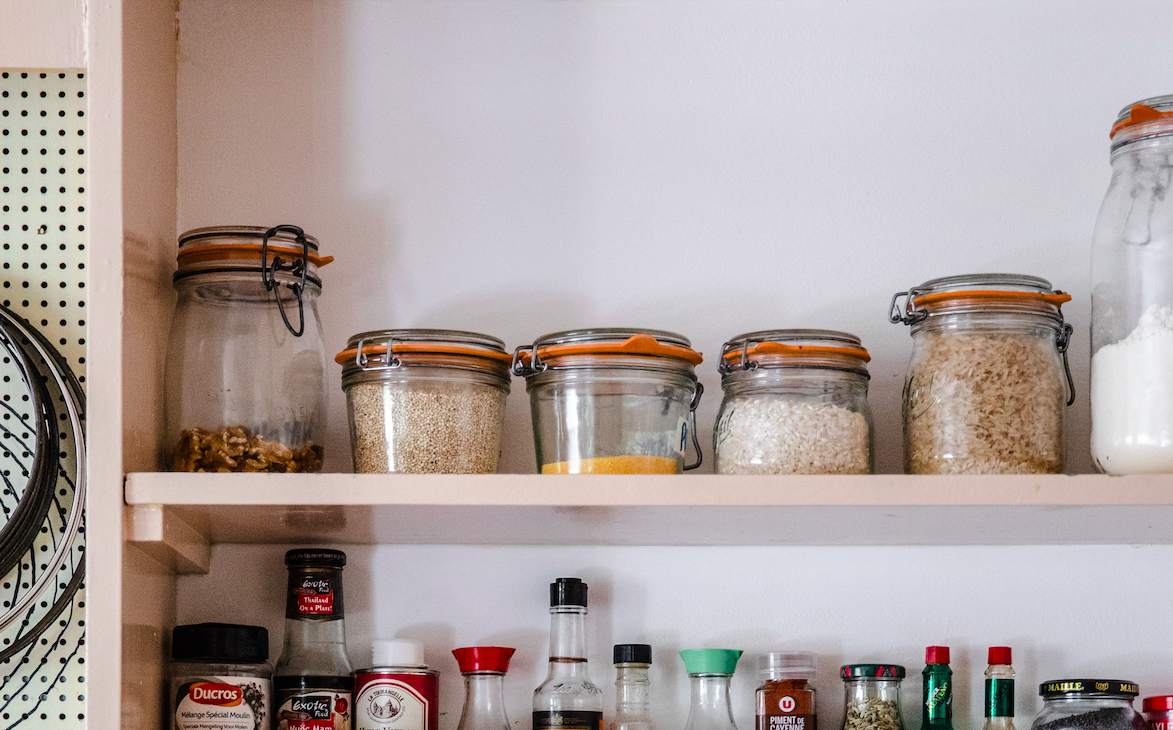The Endless Wonders of Decanting Your Own Spices
When you think of the least attractive area in your kitchen – like, really think hard about it – what comes to mind? I know we aren’t all here, trying to identify our own shortcomings while evaluating our kitchens, but there’s always that one area that isn’t our favorite. A random junk drawer that feels chaotic. A shelf or drawer in the fridge that makes no sense, a pile of condiments no one will ever use.
For us – and for many of our food aficionado friends – it can be really distracting approaching our spice racks, cabinets, and containers.
Design Desires Go Through Phases
When you are younger, it is much more acceptable to have spices from a variety of brands, in an array of colors, shapes, and sizes. At this point in your life, you are learning about your own palette and you are leaning into new flavors (or more flavors) intensely. As you get older – or even through varying stages of your life – a concise, cohesive spice rack makes so much more sense. It feels good, and allows you to reach into other flavors every once in a while and really test the waters. The way your spice rack looks could make cooking pretty discouraging.
The La Peetch team had fun decanting together in the kitchen in September of 2021, before filming what would become the pilot episode.
What is Decanting?
Re-packaging (or re-potting) your spices and loose-leaf herbs into matching jars is a process called “decanting.” You are not only taking the random container factor out of the equation for a more streamlined and clean feel to your pantry, but you are removing any exposure your herbs may otherwise have to overprocessed plastics and other chemicals found in packaging. The decanting process often involves making labels and sometimes even color coding your jars with different lids or markers to easily identify ingredients with a passing glance.
Decanting Improves Functionality
Of course, the level of decanting always depends on the type of kitchen you are working in and with. Home chefs require a whole different set of utensils and esthetics than specialty and commercial kitchens. Explains Chef Kendall, “If your spices come in a cute enough jar, like Burlap and Barrel and Diaspora, then that’s fine. It totally depends on your kitchen function. I’ve pivoted from a professional kitchen where they are in big drums or little kitchen boxes.” At work, quickly identifying items is important. This could lead to an entirely different organizational choice over a home kitchen.
Decanting Saves Space – and The World
“At home,” expands Kendall, “it’s how you personalize your space and streamline something. It can be a visual thing for people – but it’s more about a space saver than anything.” Sourcing wholesale packaging and ingredients if and when you can is nice for less packaging and wasteful impact.
As a rule of thumb, try to keep spices in dark, dimly lit areas. Exposure to light and heat can drastically affect their potency. Make sure to thoroughly wash your jars with soap and water and dry them completely before decanting. Mark the date that you fill your jars, as this is important for refill options. Whole spices last around 2 years, and ground spices should be replaced every 6-9 months.
Here at the Courageous Cooking School we LOVE our spices and some of our favorites come from Curio Spice Co. Check out their Secret Spice Society… where a beautiful spice or spice blend is shipped to your front door every month!


